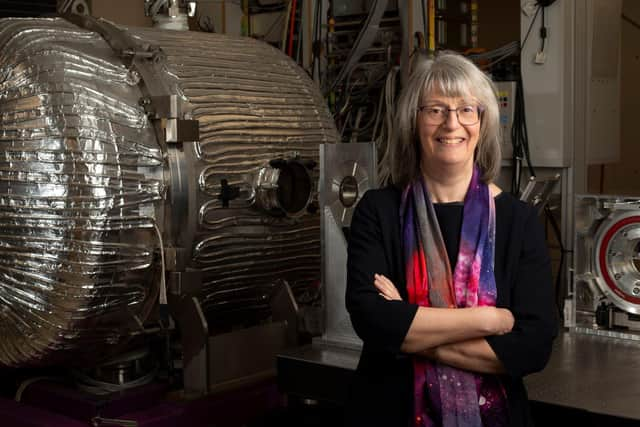Edinburgh scientists celebrate launch of James Webb Space Telescope which they helped to develop
and live on Freeview channel 276
When the massive telescope, known as Webb, blasted off from Europe’s spaceport in French Guiana on Christmas Day it was the culmination of decades of scientific collaboration.
Edinburgh-based scientists had a major role to play in the mission, which is led by NASA, the European Space Agency (ESA) and the Canadian Space Agency, in the development of MIRI (Mid-Infrared Instrument) which is contained within the spacecraft and will be able to see the faint light from the most distant stars and peer through dust and gas to spot stars being born.
Advertisement
Hide AdAdvertisement
Hide AdMuch of the design and build of MIRI took place in Scotland, led by Professor Gillian Wright MBE, who is based at the capital’s Royal Observatory.


She said: “To see Webb launch, with MIRI on board, after more than two decades is a seminal moment. MIRI is a special instrument, for the breadth of its science, the team that built it, and being the coolest instrument on Webb.
"The MIRI team rose to the challenges and brought some exquisite engineering solutions to make it a reality. The Webb mission as a whole is an amazing technological breakthrough in scale and complexity, and this extends to the instruments, including MIRI.
"With the launch, all of us are excitedly anticipating the first MIRI data and the new view of the universe we will have.”
Advertisement
Hide AdAdvertisement
Hide AdThe James Webb Space Telescope is set to redefine our understanding of the cosmos and unveil some of the secrets of the distant universe, looking back in time, closer to the beginning of the formation of stars and galaxies than ever before, to determine how the first galaxies formed.
Caroline Harper, head of space science at the UK Space Agency, said: “Webb is set to re-write the text books on astronomy, showing us things about the universe we have never been able to see before. I am excited to see the fascinating discoveries the spacecraft makes as it reveals the evolution of the universe.
“The UK has played a crucial role in this once-in-a-generation mission, developing the Mid-Infrared Instrument, which will examine the physical and chemical properties of objects in the early universe in greater detail than ever.
"This has been a fantastic example of academic-industry partnership, showcasing the skills and expertise of our scientists and engineers.”
Advertisement
Hide AdAdvertisement
Hide AdUK Government Minister for Scotland Iain Stewart added: “Today's launch marks another proud moment in Scotland’s long tradition of scientific innovation. Much of the design and build was led by Professor Gillian Wright MBE with development taking place in Edinburgh at the UK Astronomy Technology Centre at the Royal Observatory.
“Backed by UK Government funding, the project is an impressive feat of international collaboration. It’s a testament to the UK’s position at the forefront of global science and research, and Scotland’s key role within that.”
The project was praised by Prime Minister Boris Johnson.
He said: “The launch shows the enormous value of investing in our science and research base and cementing the UK’s position as a global science superpower – not only to give us a glimpse of galaxies beyond our own but also to support skilled jobs and boost investment here at home.”
A message from the Editor:
Thank you for reading this article. We're more reliant on your support than ever as the shift in consumer habits brought about by coronavirus impacts our advertisers.
If you haven't already, please consider supporting our trusted, fact-checked journalism by taking out a digital subscription.
Comment Guidelines
National World encourages reader discussion on our stories. User feedback, insights and back-and-forth exchanges add a rich layer of context to reporting. Please review our Community Guidelines before commenting.